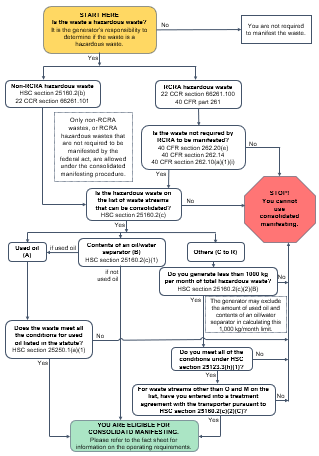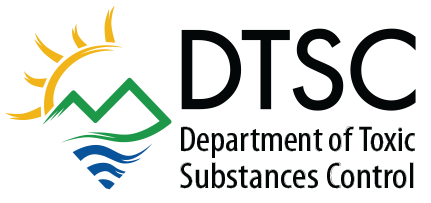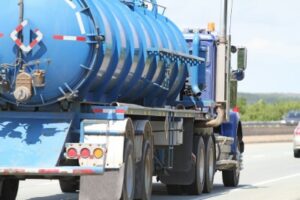Consolidated Manifesting Generator Requirements
Introduction
The Department of Toxic Substances Control (DTSC) has developed this fact sheet to provide generators of hazardous waste with information regarding laws and regulations concerning the use of consolidated manifesting for the transportation of their hazardous wastes. This information will help generators determine eligibility for consolidated manifesting and will explain the requirements for using the procedure.
The requirements and procedure for consolidated manifesting were established in 2001 by Senate Bill 271 and are covered in California Health and Safety Code section 25160.2. This section of law was amended in 2020 with the passage of Assembly Bill 2920, which incorporated the U.S. EPA e-Manifest system and added retail hazardous waste to the list of eligible waste streams.
Consolidated manifesting, formerly known as modified manifesting or “milk runs,” allows certain registered hazardous waste transporters to combine specified wastes from multiple eligible generators on a single manifest, rather than using a separate manifest from each generator. Generators using the consolidated manifesting procedure are exempt from filling out a hazardous waste manifest. The consolidated transporter completes both the generator and the transporter sections of the manifest.
This page contains several citations of statutory sections from California Health and Safety Code (HSC), as well as regulatory sections from Title 22 of the California Code of Regulations (22 CCR) and Title 40 of the Code of Federal Regulations (40 CFR). Those citations describe where a particular requirement, provision, or definition can be found within California or federal laws and regulations.
Quick Links to Topics on This Page
Eligible Waste Streams
Generator Eligibility
Requirements
Recordkeeping
Transportation
Fees
Questions
Definitions
Eligibility for Consolidated Manifesting
Eligible Waste Streams
The consolidated manifesting procedure may be used only for certain non-RCRA hazardous wastes (refer to the Definitions, if needed), as well as certain RCRA hazardous wastes that are not required to be manifested under RCRA. Below is the list of eligible waste streams listed in HSC section 25160.2(c). Note: Letters in parentheses reflect the codes used for each waste stream identified in the Consolidated Transporter Notification Form (DTSC Form 1299).
- Used oil (A)

- Contents of an oil/water separator (B)
- Solids contaminated with used oil 1 (C)
- Brake fluid 1 (D)
- Antifreeze 1 (E)
- Antifreeze sludge 1 (F)
- Parts cleaning solvents, including aqueous cleaning solvents 1 (G)
- Hydroxide sludge contaminated solely with metals from a wastewater treatment process 1 (H)
- Paint-related waste, including paints, thinners, filters and sludges 1 (I)
- Spent photographic solutions 1 (J)
- Dry cleaning solvents including perchloroethylene, naphtha, and silicone-based solvents 1 (K)
- Filters, lint and sludges contaminated with dry cleaning solvent 1 (L)
- Asbestos and asbestos-containing materials 1 (M)
- Inks from the printing industry 1 (N)
- Chemicals and laboratory packs collected from K-12 schools 1 (O)
- Absorbents contaminated with other wastes on this list 1 (P)
- Filters from dispensing pumps for diesel and gasoline fuels 1 (Q)
- Retail hazardous waste, collected from a retailer engaged in business in the state 1, 2 (R).
1 See the Treatment Agreement and Other Requirements for Specific Waste Streams, below.
2 When using the consolidated manifesting procedure for retail hazardous waste, incompatible materials transported in the same transport vehicle must be managed according to the provisions in the Hazardous Waste Control Law (Chapter 6.5 of Division 20 of the Health and Safety Code) and the regulations pursuant to that chapter. [HSC section 25160.2(c)(2)(A)(xvi)(III)]
Generator Eligibility
We have created guides to help you determine your eligibility to operate under the consolidated manifesting procedure. The guide below is interactive. As you answer each question, a new question will appear until you reach a point where you can determine whether you are eligible for consolidated manifesting or not.
Interactive Eligibility Guide: Consolidated Manifesting for Generators
Alternative Formats
DTSC has also prepared two other formats for the eligibility guide: an image-based flow diagram and a text-based key. Choose either of the panels below to access these guides.

Click to open a new tab with a consolidated manifesting eligibility guide presented as an image-based flow diagram.

Click to open a new tab with a consolidated manifesting eligibility guide presented as a text-based key.
Requirements
Identification Number
All generators using the consolidated manifesting procedure must have an Identification Number unless exempted from manifesting requirements as generators of less than 100 kg per month of “silver-only” hazardous waste. [HSC section 25160.2(b)(10)].
Generators of hazardous wastes should choose either a permanent U.S. EPA (federal) Identification Number or a permanent California (state) Identification Number, as appropriate for the kinds and amounts of hazardous waste generated. Information about the two kinds of ID Numbers, as well as applications for both, can be found on DTSC’s ID Number webpage.
Treatment Agreement and Other Requirements for Specific Waste Streams
For items C through R in the list above to be eligible, the generator must:
- Generate no more than 1000 kg of hazardous waste per calendar month, though the generator may exclude the amount of used oil and the contents of an oil/water separator for the purposes of calculating this limit;
- Meet the requirements of HSC section 25123.3(h)(1); and
- Enter into an agreement with the transporter in which the transporter agrees to submit a confirmation to the generator that the hazardous waste was transported to an authorized facility for appropriate treatment. That agreement may be on a consolidated manifest receipt or a separate document. Wastes excluded from this requirement include asbestos and asbestos-containing materials (M), chemicals and laboratory packs collected from K-12 schools (O), and any other waste stream for which DTSC determines there is no reasonably available treatment methodology or facility.
[HSC sections 25160.2(c)(2)(B) & (C)]
Transport of Eligible RCRA Hazardous Wastes under Consolidated Manifesting
RCRA hazardous wastes are eligible for consolidated manifesting only if they are not required by RCRA to be manifested, the waste stream is found in the list above, and the generator meets all the other requirements. There are two categories of generators, based on how much RCRA hazardous waste they generate per calendar month, who may be eligible for consolidated manifesting of their RCRA hazardous wastes:
RCRA Very Small Quantity Generators: Generators who fit the definition of very small quantity generators (VSQG) as found in 40 CFR section 260.10 and who meet the conditions specified in 40 CFR section 262.14 are exempted by RCRA from manifesting their RCRA hazardous waste. California did not adopt this exemption, so California generators must manifest shipments of their hazardous waste regardless of generator category. However, generators who fit the definition and meet the conditions cited above are potentially eligible for consolidated manifesting of their RCRA hazardous wastes. [HSC section 25218.1(q); 40 CFR section 262.10(a)(1)(i)]
RCRA Small Quantity Generators with a Reclamation Agreement: In order to transport RCRA hazardous  waste from a generator who generates more than 100 kg but less than 1,000 kg per calendar month of RCRA hazardous waste without a separate manifest, there must be a reclamation agreement between the generator and the reclaimer of the waste, who must also be the transporter. The following conditions must be met:
waste from a generator who generates more than 100 kg but less than 1,000 kg per calendar month of RCRA hazardous waste without a separate manifest, there must be a reclamation agreement between the generator and the reclaimer of the waste, who must also be the transporter. The following conditions must be met:
-
- The type of waste and frequency of shipments are specified in the agreement;
- The vehicle used to transport the waste to the authorized facility and to deliver regenerated material back to the generator is owned and operated by the reclaimer of the waste; and
- The generator maintains a copy of the reclamation agreement in his or her files for a period of at least three years after termination or expiration of the agreement.
A reclaimer nullifies his or her reclamation agreement with a generator if the hazardous wastes are transferred to another vehicle not owned and operated by the reclaimer. The generator is not allowed to use consolidated manifesting if any of the conditions governing reclamation agreements are not met. [40 CFR section 262.20(e)]
Recordkeeping
Receipts
Generators must keep all copies of each of the consolidated manifest receipts for at least three years from the date of shipment of the hazardous waste. Please refer to the statute for the information required on the receipt. [HSC sections 25160.2(b)(3) & (4)]
Reclamation Agreement
Generators are required to maintain a copy of the reclamation agreement for at least three years after termination or expiration of the agreement. [40 CFR section 262.20(e)(2)]
Transportation of Eligible Wastes
Consolidated Transporters
To operate under the consolidated manifesting procedure, generators are required to use only transporters that have registered and notified DTSC of their intent to operate under the consolidated manifesting procedure. [HSC section 25165(a)]
- To verify a transporter’s registration, check DTSC’s Registered Hazardous Waste Transporter Database, or email transporter@dtsc.ca.gov.
- To verify that a transporter has notified DTSC of their intent to operate under the consolidated manifesting procedure, you may request to see your transporter’s registration certificate, which has this information.
Fees
- Generation and Handling Fee (replaced the Generator Fee as of January 1, 2022) — The generator of the hazardous waste for each site is liable for the G&H fee, which is based on the tonnage of hazardous waste generated at that site. The fee is administered by the California Department of Tax and Fee Administration. For more information, please refer to DTSC’s Generation and Handling Fee webpage. [HSC section 25205.5]
Questions
- For consolidating manifesting or general transporter-related questions, please contact the Transportation Unit at transporter@dtsc.ca.gov, or by phone at +1 (800) 618-6942.
- For general hazardous waste questions, you may contact DTSC’s Regulatory Assistance Officers by calling +1 (800) 728-6942 (72-TOXIC). Or you may send an email to RAO@dtsc.ca.gov.
- All other questions should be directed to the DTSC office nearest you. For a list of all DTSC offices, go to our Office Address and Phone Numbers web page.
Definitions
- Consolidated manifest: A hazardous waste manifest used by a consolidated transporter to combine hazardous waste shipments from multiple generators on one consolidated manifest pursuant to the procedures in HSC section 25160.2. [HSC section 25110.9.3]
- Consolidated transporter: A hazardous waste transporter registered pursuant to HSC section 25165 and the regulations adopted by the department who has notified the department pursuant to HSC section 25165, of their intent to use the consolidated manifesting procedures set forth in HSC section 25160.2. [HSC section 25110.10.1]
- Generator: Any person, by site, whose act or process produces hazardous waste or whose act first causes a hazardous waste to become subject to regulation. [22 CCR section 66260.10]
- Identification Number: The number applied for and assigned to all handlers of hazardous waste. [22 CCR section 66260.10]
- Resource Conservation and Recovery Act (RCRA): The federal statute that regulates generators, transporters, and facilities that treat, store or dispose of hazardous waste. All RCRA hazardous waste are identified in 40 CFR Part 261 and its appendices, and 22 CCR section 66261.1, et seq. [22 CCR section 66261.100]
- Non-RCRA hazardous waste: Hazardous waste regulated in the State of California, other than RCRA (federally regulated) hazardous waste. A hazardous waste is presumed to be RCRA hazardous waste unless it is determined, pursuant to 22 CCR section 66261.101, that it is a non-RCRA hazardous waste.
- Retail hazardous waste: Unsold consumer products in their original retail sales packaging that are determined to be hazardous waste by the retailer. The list of items eligible under this designation includes, but is not limited to: bleach and other cleaning products, pool chemicals, laundry detergent, cosmetics, personal hygiene products, nail polish, aerosol products, herbicides, and fertilizers. [HSC section 25160.2(c)(2)(A)(xvi)]
- Silver-only: Hazardous waste are wastes that are hazardous solely due to the presence of silver. [HSC section 25143.13]
*Disclaimer
This fact sheet does not replace or supersede relevant statutes and regulations. The information contained in this fact sheet is based upon the statutes and regulations in effect as of the date of the fact sheet. Interested parties should keep apprised of subsequent changes to relevant statutes and regulations.
Hazardous Waste Links
- Hazardous Waste Home
- Certified Appliance Recycler (CAR) Program
- CUPAs
- Defining Hazardous Waste
- Electronic Waste (E-Waste)
- Emergency Response Program
- Enforcement
- Facilities (TSDFs)
- Generator Improvements Rule
- Generators
- Hazardous Waste ID Numbers
- Hazardous Waste Management Plan
- Hazardous Waste Manifests
- Hazardous Waste Tracking System
- Household Hazardous Waste
- Metal Recycling
- Metal Shredding Facilities and Wastes
- Permitting
- Toxics in Products
- Transporters
- Universal Waste
- Form 1358
- California Hazardous Waste Codes
Hazardous Waste Related Links
- Annual/Biennial Reports
- Annual Fee Summary
- Customer Billing Portal (Cost Recovery)
- DTSC Advisory on the Management of Spent Fuels
- EnviroStor
- Hazardous Waste Publications
- Find a Registered Hazardous Waste Transporter
- Hazardous Waste Policies & Procedures
- Hazardous Waste Project Documents
- Imports and Exports of Hazardous Waste
- Kettleman Hills Facility
- Land Use Restriction Sites
- Office of Criminal Investigations
- PV Modules (Solar Panels)
- Regulatory Assistance Office
- Report an Environmental Concern
- Retail Waste

